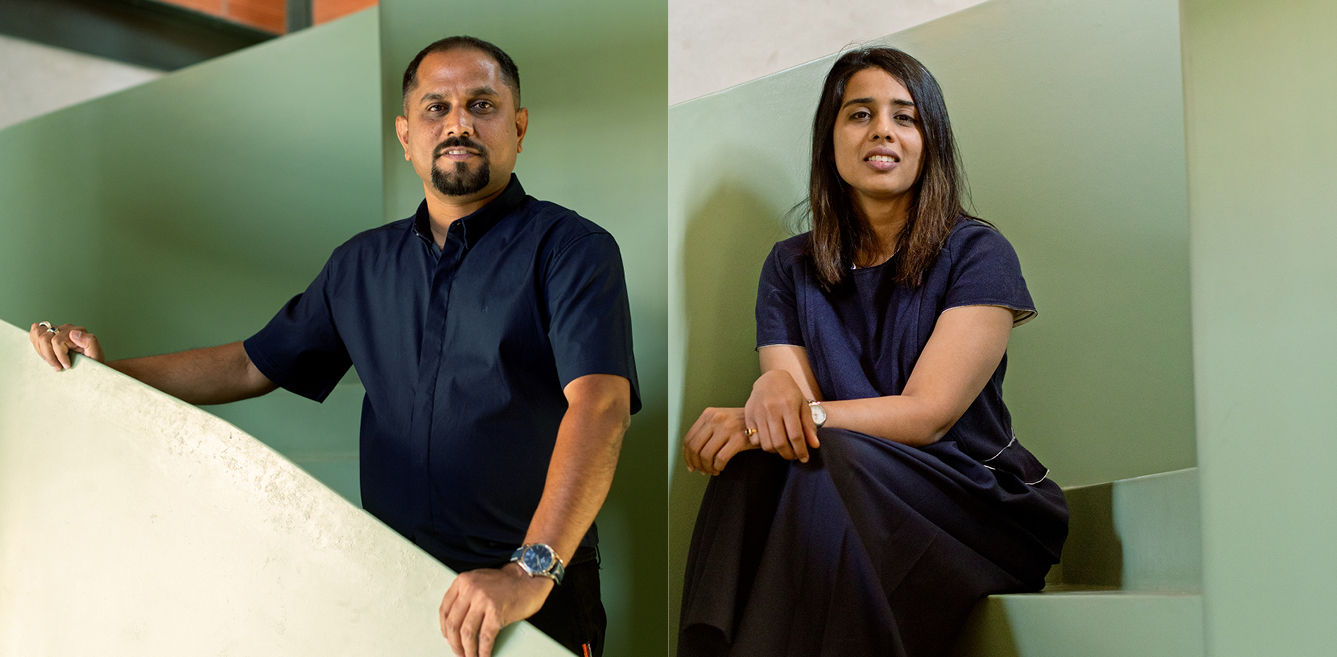

Embracing the evolution of design tools, Shalini Chandrashekar and G.S. Mahaboob Basha – Principals and Co-Founders, Taliesyn Design & Architecture, have integrated digital advancements into their mood board process. With access to vast imagery and research resources, they can experiment and refine ideas with greater efficiency. In our February 2025 issue, we witness how they fine-tune technology and creativity, ensuring that their vision is articulated with clarity and precision. Read on to find out more!
How has your mood board creation process evolved with digital tools, and what balance do you strike between physical and digital elements in your conceptual phase?
Our mood board creation process has evolved with digital tools. It has become much easier and quicker to iterate, giving us more options to explore and refine our concepts. The ability to conduct research online and access vast imagery has made the process faster and allows us to fine-tune details more precisely. However, we also recognise the importance of maintaining the analogue side of design. There should be a balance between both. We like to start with physical materials—cutouts, sketches, textures—because they give us a tactile connection to the project. Then, we move to digital tools to refine and bring the mood board to life. Digital tools, especially AI-generated imagery, are incredibly helpful and make things much more efficient, but they don’t replace the essence of the analogue approach.
Walk us through your thought process when you begin a new mood board – what elements do you consider first, and how do you layer colours, textures, and materials to build your narrative?
Our first consideration is context when we begin a new mood board. The site’s context plays a pivotal role in shaping the direction of the design. We think about the environment, the local culture, and how to incorporate elements that reflect the surrounding area.
After we have gone through initial sketches, our mood board usually starts in a more monochrome phase, focusing on neutral tones and basic forms. This phase helps us refine the spatial arrangement and overall structure. The board evolves as materials come into play—introducing colours, textures, and layers that deepen the narrative. Throughout, the context drives everything, from colour choices to the materials we use.
We generally use a subtle narrative that doesn’t overpower but resonates with the environment. Mood boards also help us convey the feel of the material, ensuring the design feels connected to its environment.
How do you use mood boards to communicate with clients, and what techniques have you developed to help them understand your vision through these visual tools?
We use mood boards as an easy way to communicate our vision with clients, starting at the conceptual stage. They help lay the foundation for the design process, which evolves as we move forward. Throughout this journey, the client’s involvement is key, and the mood board becomes a collaborative, organic tool that adapts as the design progresses. We also create mockups on-site and take photos to communicate how things are shaping up visually. This back-and-forth process allows us to refine the design and make it more site-specific, ensuring we align with the client’s vision while allowing the project to evolve naturally.
Grab a copy of our February 2025 issue to read the full story! Click here to subscribe!
The architectural landscape of Rajasthan is steeped in a rich tradition of historic masonry, reflecting…
Are you a corporate employee spending 10+ hours in an ordinary cubicle that's fused in…
Modern Indian homes are no longer bound by their physical vicinity. They have outgrown our…
Häcker Kitchens, a brand synonymous with quality and innovation, has a rich legacy that spans…
In this home designed by Sonal R Mutha and Aniketh Bafna, founders and principal designers…
Essentia Home’s journey in redefining luxury interiors took a bold new step as it opened…